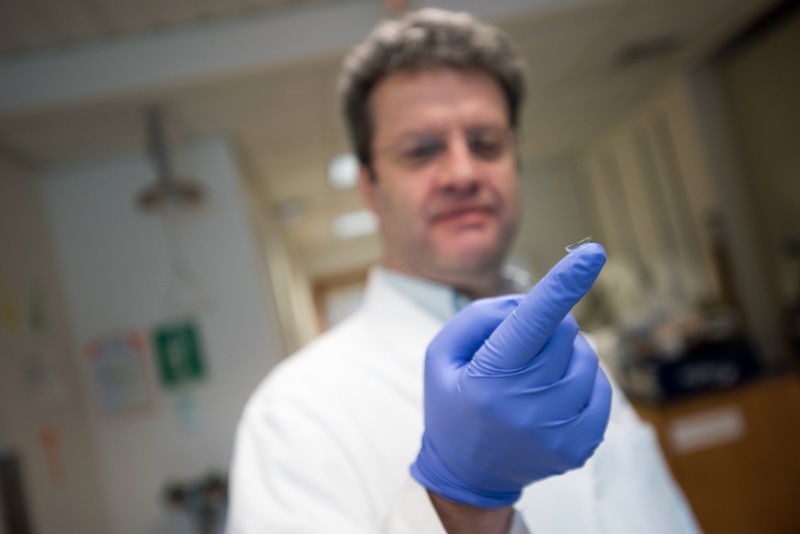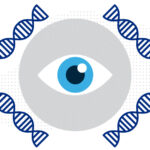An advance for drug-eluting contact lenses: Delivery to the back of the eye

Drug-eluting contact lenses, which gradually release drugs into the eye, offer a promising alternative to daily eye drops, which can be unpleasant and hard for patients to properly administer. In a 2016 pre-clinical study of glaucoma, the engineered lenses lowered eye pressure at least as well as daily eye drops.
New work from Massachusetts Eye and Ear and Boston Children’s Hospital extends these findings to the harder-to-reach back of the eye, particularly diseases of the retina. Currently, most retinal diseases require eye injections and implants that carry potential side effects, some of them serious. Moreover, nearly 1 in 4 patients given eye injections don’t come back, due to a fear of needles in their eyes.

“Though there are drugs that are effective for these conditions, it is hard to get them to the retinal tissues in an non-invasive way,” says Joseph B. Ciolino, MD, the Henry Freeman Allen Cornea Scholar at Massachusetts Eye and Ear.
Ciolino co-led the new study, published in Biomaterials, with Daniel S. Kohane, MD, PhD, director of the Laboratory for Drug Delivery and Biomaterials at Boston Children’s. It tested contact lenses dispensing dexamethasone, a steroid used to treat inflammatory eye diseases.
Promising preclinical findings
In preclinical animal models of uveitis and macular edema — two forms of eye inflammation — the lenses safely provided sustained drug delivery to the retina for one week. In fact, to the team’s surprise, the lenses provided 200 times the concentration levels of hourly eyedrops, and were as effective as eye injections in preventing retinal damage.
“We had previously shown that our design for drug-eluting contact lenses could provide sustained release of substantial amounts of drug, over extended periods, to the anterior parts of the eye,” says Kohane. “The question then became whether this approach could be used to treat diseases of the back of the eye — the retina and adjacent structures. We now know we can.”

Within one year, the team hopes to launch clinical trials to study the effectiveness of the lens in human patients, Ciolino says.
Amy E. Ross and Lokendrakumar Bengani, both of Massachusetts Eye and Ear and Boston Children’s, were co-first authors on the study. Ciolino and Kohane are inventors on a patent related to this work filed by Massachusetts Eye and Ear and Boston Children’s Hospital.
Related Posts :
-

Genetic variants are found in two types of strabismus, sparking hope for future treatment
Determining how genetics contribute to common forms of strabismus has been a challenge for researchers. Small discoveries are ...
-

Treatment for the vision condition achromatopsia helps Aiden embrace the outdoors
A lot of things excite 10-year-old Aiden Flaherty: drums, soccer, skiing, video games. But lately, he’s also found joy ...
-

Finding a treatment option for tear duct obstruction that works for children
Congenital tear duct obstruction (a blocked tear duct) is the most common cause of excessive tearing in infants and young ...
-

Chloe navigates Marfan syndrome with a positive attitude — and a responsive care team
Chloe Burian has always defied expectations. Despite surgeries and other treatments for several conditions that stem from the genetic disorder&...





